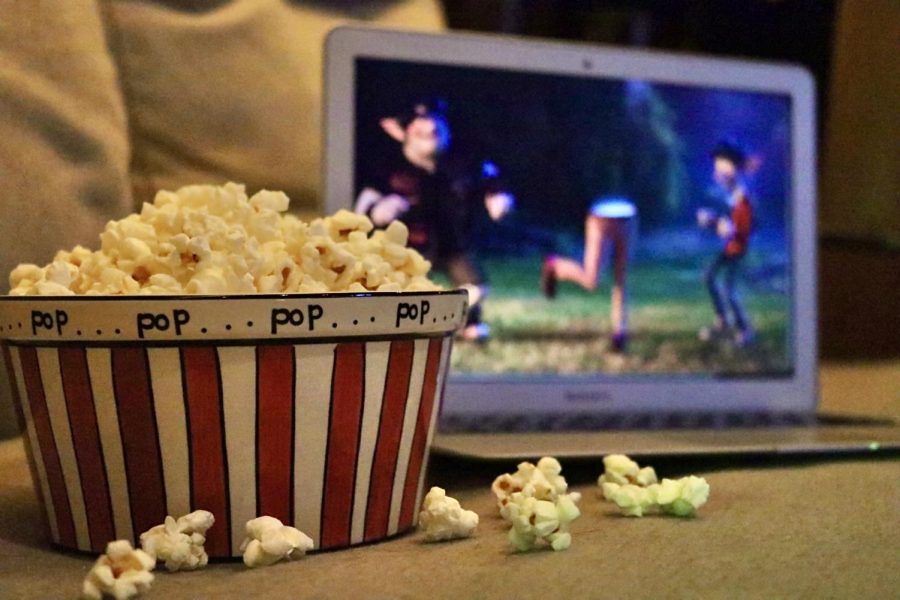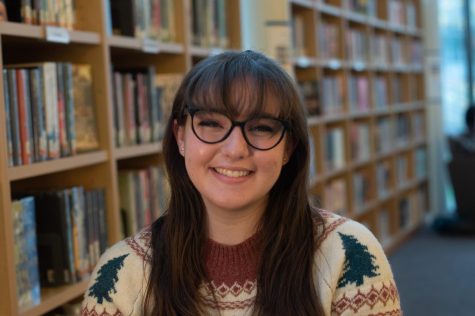Pixar’s “Onward” Emphasizes the Importance of Family While Managing Loss
While “Onward” definitely has quite a few comical elements, it also shares a heartfelt story between Ian and Barley.
April 22, 2020
Warning: This review has spoilers for the movie “Onward.”
What starts off as a light comedic animated movie soon turns into a dramatic story between two elven brothers, Ian Lightfoot (portrayed by Tom Holland) and Barley Lightfoot (portrayed by Christ Pratt). They, along with their mother Laurel Lightfoot (portrayed by Julia Louis-Dreyfus), live in a suburban town set after the world of magic has died down.
Their world is shown to be full of magic, with everyone living in giant mushroom houses and unicorns roaming the streets.
However, nobody in their world uses magic as often as they used to because of how much technology has advanced in the world.
The one who pitched this unique setting, and the one who also directed Pixar’s “Onward,” was Dan Scanlon. However, what many people don’t know about “Onward” is that parts of the story are Scanlon’s own truth.
Scanlon lost his father when he was one year old and when his brother was three years old, much like in the story of “Onward.” And when the two brothers were teenagers, a relative gave them a recording of their father much like the recording Ian Lightfoot listens to in the exposition of the movie.
But even if you didn’t know this backstory, this movie is more of a tear-jerker than it originally presents itself to be.
On Ian’s 16th birthday, Laurel presents something to Ian and Barley that their late father asked her to give to them: his magical staff from before he passed.
And along with this staff, a piece of paper with instructions on how to cast a “visitation spell” to bring him back for one day using a Phoenix Gem, which seems to be a nod to the “Egg of the Phoenix” that assists spellcasters in the tabletop roleplaying game Dungeons and Dragons.
Barley, the eccentric elder sibling, believes that he knows exactly what to do because of his previous “experience” with magic. In the exposition of the movie, he is often seen playing a tabletop game titled “Quests of Yore,” which looks very similar to Dungeons and Dragons. He realizes that the Phoenix Gem increases the abilities of spellcasters and that their father was a wizard.
After Barley attempts to complete the spell a few times, and it seems like hope is lost for the family, Ian picks up the paper and reads the words of the spell slowly. At first, it begins to work, but suddenly Barley bursts in to help and the spell explodes halfway through. With only half of the spell completed, this leaves only half of their dad with them – just his sentient legs and a broken Phoenix Gem.
While this certainly sets up for some hilarious comedic moments with the dad only being legs and feet, I also think Pixar did a very good job of tying in some heartfelt moments with this situation. Even without words, the movie showed just how much Ian and Barley’s father wanted to be there for them, even if he couldn’t be there fully.
Then, the rest of the film shows how Ian and Barley go on to a quest to find another gem to finish the spell and find the rest of their dad.
However, the quest and the plot of this movie is not the part that matters. What is particularly impactful about this movie revolves around Ian’s list from the beginning of their trip.
Once the pair begin their quest in Barley’s van nicknamed “Guinevere,” Ian creates a list in his notebook of things that he would like to do with his father during the time that he is with them. Scrawled in the notebook are things like playing catch, taking a walk, having a heart to heart conversation, laughing together, having a driving lesson, and sharing his life with him.
And throughout the movie, we see Ian do exactly that. But we do not get to see Ian do any of that with his father.
At the end of the movie, right before sunset when their father will be gone forever, Ian gives the opportunity to see their dad fully to his brother.
Ian goes down his list and begins to scratch off all of the things he won’t be able to do with his father, but halfway through he begins to think about his brother instead.
As the movie flashes back to all of the different scenes where Ian did do everything he wanted, he realizes that he did them all with his brother Barley during their adventure to find their dad.
This is where the tears start coming.
It isn’t the fact that Ian never got to see his father, but that he has realized that his brother is truly a gift to him despite the two being very different from each other. Often in film, we see sibling relationships where the siblings appreciate each other and work together because of how similar they are – or, to create comedy, we see opposing siblings who often argue as the stereotype goes.
But this film doesn’t agree with either of those. Instead, it chooses to show a realistic sibling relationship full of positives and negatives, and real character growth through all of the characters.
Pixar did an amazing job of tying each small detail back to the audience, so nothing was left out in the end. Ian’s list is a perfect example of the amazing work they did with this movie, and they did a wonderful job of portraying a sibling dynamic with its ups and downs in a fantastical world.
I highly suggest this movie to anyone, but especially animated movie lovers, siblings of all ages, and Dungeons and Dragons players. You can find it on Disney+ now, where the production team released the movie early due to theaters being closed around the world from COVID-19.





